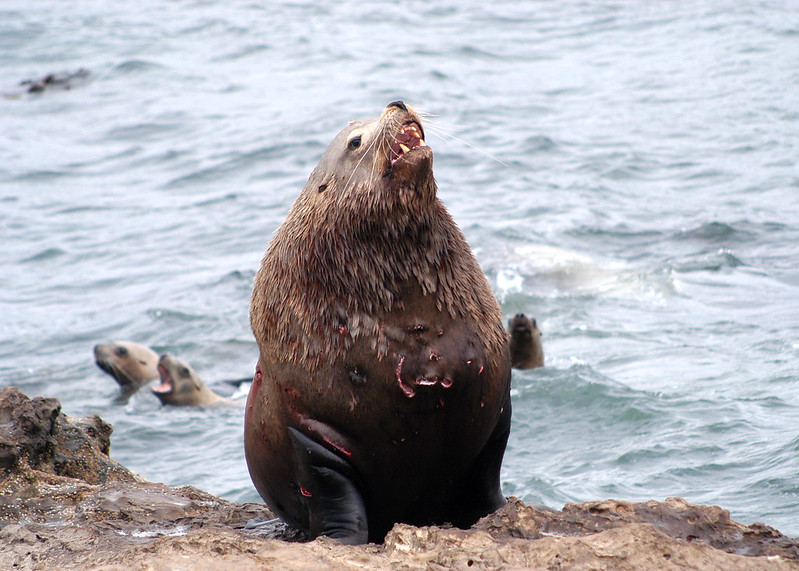
States, Tribes Euthanize 6 Steller Sea Lions At Bonneville Under New Federal Permit
Steller sea lions were lethally removed from the Columbia this fall, a first under recently granted federal authorization to Northwest states and tribes.
Six males captured at Bonneville were euthanized in October and November by WDFW, ODFW and Columbia River Inter-Tribal Fish Commission staffers as part of an effort to reduce predation on ESA-listed salmon and steelhead stocks.

Previously, only California sea lions were being removed there.
With Stellers now having left for the winter – perhaps only for a period of several weeks if recent years are any indication – operations at the dam are on pause until early next year when spring Chinook and sea lions return, says Kessina Lee, WDFW’s Region 5 director.
She will give the Washington Fish and Wildlife Commission a presentation Friday afternoon on Columbia sea lion laws and management.
The lethal removals come after Congress amended the Marine Mammal Protection Act in December 2018. This August, the National Marine Fisheries Service permitted the three Northwest states and Nez Perce, Yakama, Umatilla, Warm Springs and other tribal entities to kill up to 176 Stellers over a five-year period.
That figure is well within the so-called “potential biological removal” limit for the species, as it is with the 540 California sea lions that can also be taken out over the same time frame.
The permit also gives the partners a much bigger section of water to work with – the Columbia from I-205 upstream to McNary Dam and all tributaries of the big river where ESA-listed salmon and steelhead spawn.
Any sea lions in those areas “are deemed to have a significant negative impact and are subject to removal,” per Lee’s presentation.
However, she says that Bonneville is currently the only place on the mainstem of the big river with the necessary infrastructure to handle Stellers, which can reach 11 feet and 2,500 pounds, according to NMFS.
Two Stellers were removed the week of October 12, one the week of October 19 and three the week of November 2.
“Our top priority is to address the source populations of habituated animals that return year after year to prey on fish that are bottlenecked below Bonneville Dam and Willamette Falls,” Lee says. “We believe most of the animals foraging in the tributaries are part of that source population of habituated animals, and if we can remove them at the dam and the falls, it will also reduce predation in the smaller tributaries. Then we can focus on proactive removals at the dam, the falls, and the tributaries and prevent animals from becoming habituated and recruiting more sea lions to those areas.”
A slide in her presentation suggests that nearly all nonlethal deterrences tested are ineffective.
From 2008 through 2019, nearly 220 California sea lions were lethally removed at Bonneville, according to WDFW, and, after ODFW received a permit to do so in 2018, another 33 from Willamette Falls were killed.
The impact of removals at the latter manmade blockage is credited with helping to sharply reduce the odds of at least one Willamette River wild winter steelhead run from going extinct, from 89 percent to 11 percent.
No Californias were spotted at the falls between late summer 2019 and late winter 2020, helping to drop predation from as much as 25 percent of the run a few years ago to single digits.
“Things are a lot brighter for Willamette winter steelhead than they (were) in 2017,” Dr. Shaun Clements, an ODFW senior policy analyst dealing with sea lion issues told us earlier this year.
His agency said that the effect of August’s permit from NMFS would create “safe zones” for salmon and steelhead.
Removing Stellers at Bonneville could prove to be a boon for upriver-bound spring Chinook. According to an April 2020 Army Corps of Engineers report, Stellers were responsible for more than 92 percent of all springer predation at the dam last year, consuming 1,820 of the 1,974 observed killed by sea lions there. All spring king stocks above the dam are listed under ESA.

